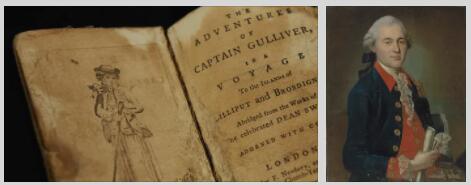The symbolism
The period between the 19th and 20th centuries, up to the October Revolution, coincides with the great crisis that swept across Europe and led to the First World War. The Russia has been shaken in recent years by the Russo-Japanese war and by internal upheavals such as the revolution of 1905 and the two revolutions of 1917. Catastrophism and apocalyptic visions are spreading; the positivistic conceptions are opposed to the religious and mystical ones, the dialogue with eternity and the universe follows the historicist thought, the prose is followed by a new poetic season. With lectures by D. Merežkovskij O pričinach upadka io novych tečenijach sovremennoj russkoj literatury (“On the causes of decay and on the new currents of contemporary Russian literature”, 1892, publ. 1893), which indicate the essential traits of the new art in the mystical content, symbols and expansion of artistic sensitivity, the season of symbolism. These were years of critical rethinking of the nineteenth-century literary tradition, of abandoning the social commitment of literature, even if not of reflection on Russian society and its orientations. Literature establishes an interweaving of relationships with the other arts; emblematic is the role of the magazine Mir iskusstva (« The world of art “, 1899-1904), which brings together artists and writers, symbolists and not. ● The European references of the new culture are the poets of French symbolism, the music of Russia Wagner, the philosophy of A. Schopenhauer and F. Nietzsche, the theater of H. Ibsen and A. Strindberg. The first symbolist decade is similar in spirit to European decadence: disenchantment, satanic themes, provocative cynicism, voluptuousness (K. Bal´mont; VJ Bryusov), morbid taste, nightmares dominate it, as in the poem by F. Sologub (pseudonym of F. Teternikov) and in his novel Melkij bes (“The petty demon”, 1905), a high point in symbolist prose. Vesy magazine(“The balance”, 1904-09), for some years the center of debate and dissemination of the new poem, was founded by Bryusov, poet of great formal ability, novelist (Ognennyj angel “The Angel of Fire”, 1907), critic, theorist and cultural organizer, who exerts a strong fascination on the poets of the next generation. ● Young people, however, consider symbolism a philosophical-religious conception rather than a literary school, and poetry a means to express the ineffable, to reach otherwise unattainable realities. In this sense he belongs to the young generation V. Ivanov, the most accomplished representative, on the theoretical level, of the mystical tendency of symbolism, a poet with a vast classical culture, a playwright and an essayist. A. Blok summarizes in his work and in his person, mythologized by his contemporaries, the itinerary of Russian symbolism from mysticism to the tragic perception of the historical moment. To the Solovëvian conception of the eternal feminine (Stichi or Prekrasnoj Dame “Verses on the Bellissima Dama”, 1905) is followed by the degradation of the Dama, the ironic unmasking of the mystics (Neznakomka “The Unknown”, 1906; Balagančik “The Puppet Shack”, 1906); more earthly thematic nuclei, such as the life of the big city, the historical destiny of the Russia, the function of the intellectuals, feed Blok’s verses and essays in the years of maturity. Blok’s friend and rival, A. Belyj (pseudonym of B. Bugaev), publishes in 1902 the first of the four ‘symphonies’ in rhythmic prose. Able to immerse himself without reserve in every adventure of the spirit, he moves in the field of mysticism and anthroposophy, he writes poetic collections, whimsical and suggestive essays; but perhaps his greatest contribution to literature is given by the novels, first of all by Peterburg (“Petersburg”, 1916), a work of disconcerting linguistic and structural modernity which made him compare him to J. Joyce.
Acmeists and Futurists
Russian symbolism, full of different personalities, entered an irreversible crisis after 1910. In that year, the programmatic article by M. Kuzmin O prekrasnoj jasnosti (“On the beautiful clarity”) appeared in Apollon , marking his detachment from symbolism. Without violent ruptures, Kuzmin opposes the mystical nebulosity of the Symbolists, asks for rationality and clarity, becoming a precursor of acmeism. The acmeists (N. Gumilëv; A. Achmatova, pseudonym of A. Gorenko; O. Mandel´štam) do not deny their debt to the symbolists, but to the allusiveness, to the musicality of the verse they oppose precision, craftsmanship, the solid architectural structures. The reflection on poetry, the classical perfection of the form, the semantic density place the greatest acmeists among the highest voices of twentieth-century poetry, not only Russian. Like the acmeists, the bitter V. Chodasevič sees in I. Annensky one of his teachers, and like them he belongs to the ‘Petersburg line’ of poetry and tends towards the classicism of form. ● In the same years M. Tsvetaeva publishes the first verses and the Futurists enter literature, writing manifestos, scandalizing, proclaiming their aversion to old age, to stale traditions. Russian futurism, beyond the spectacular aspects of his performances, he made essential contributions to the renewal of poetry in the work of V. Chlebnikov and V. Mayakovskij. The years preceding the First World War were fervent with research not only in poetry: in Andreev’s fiction and theater (Žizn ´ čeloveka “The life of man”, 1906; Car ´ golod «The hungry king», 1908) there are expressionistic ferments that will not be lost; B. Zajcev attempts the ways of impressionism, Remizov and Zamyatin those of the so-called ornamental prose.




